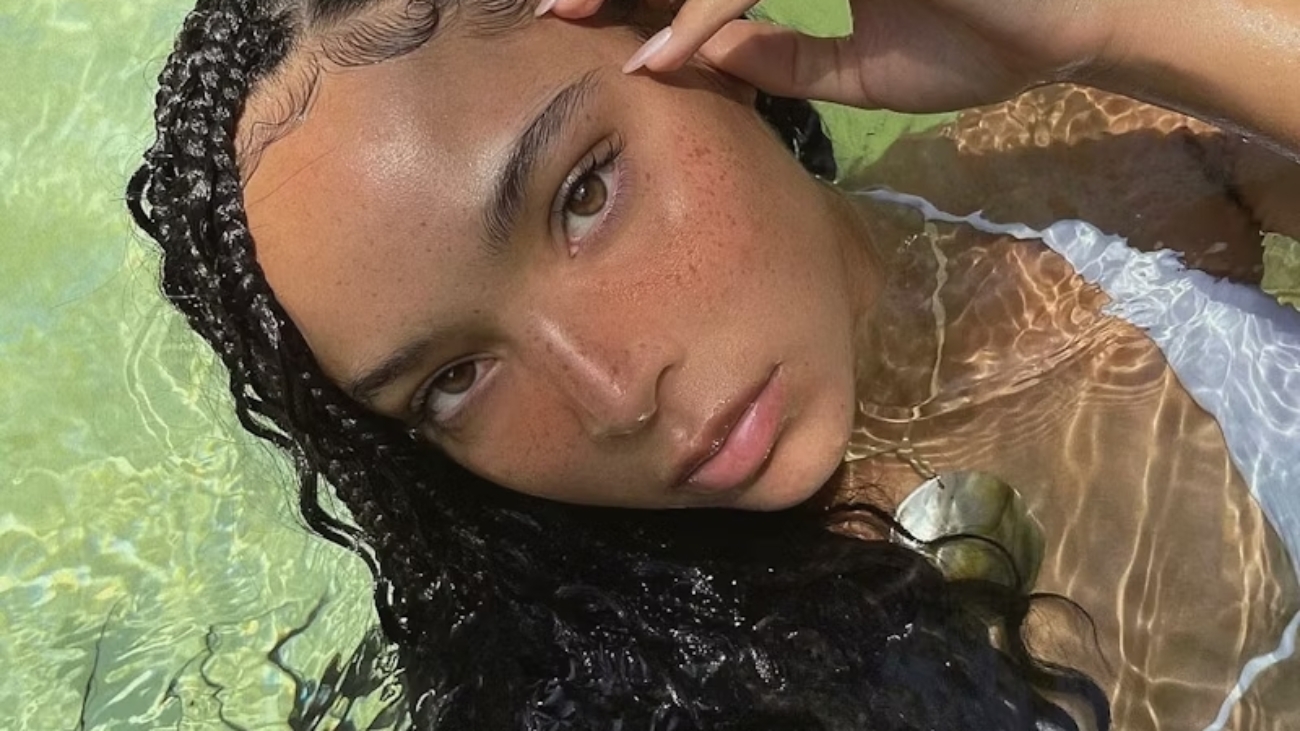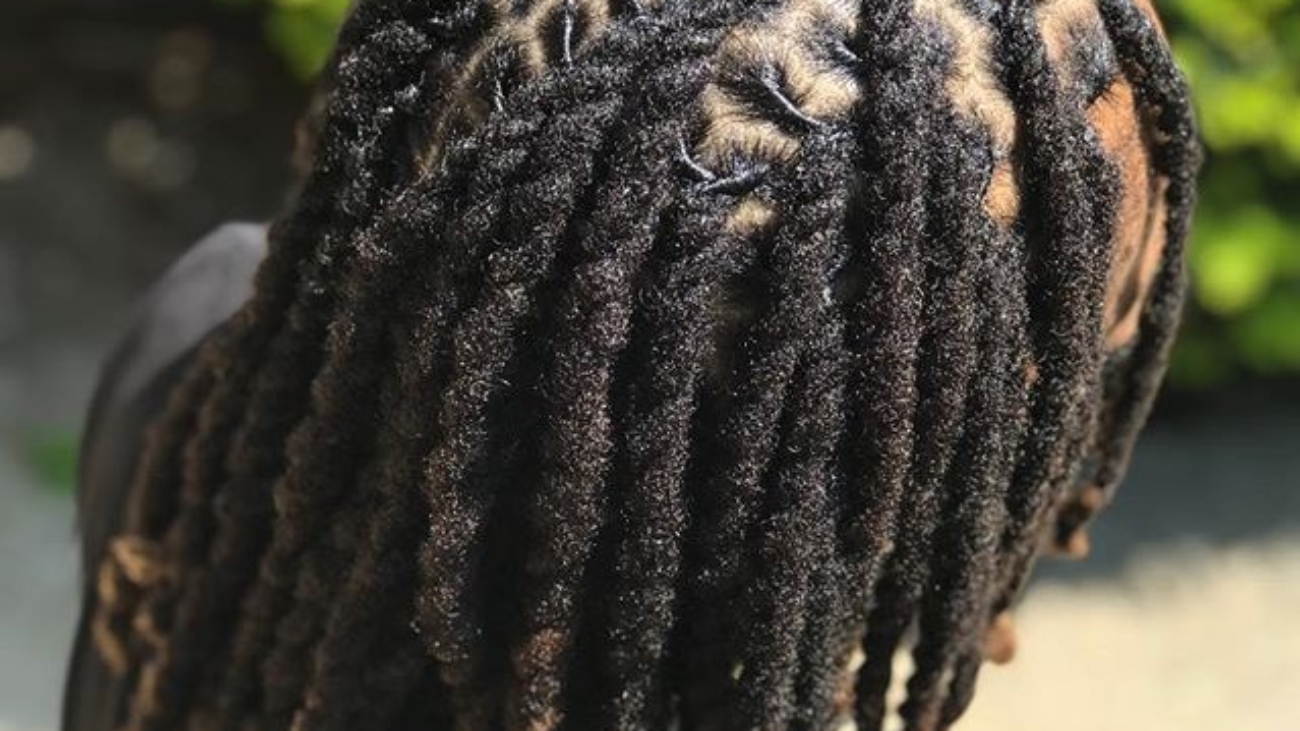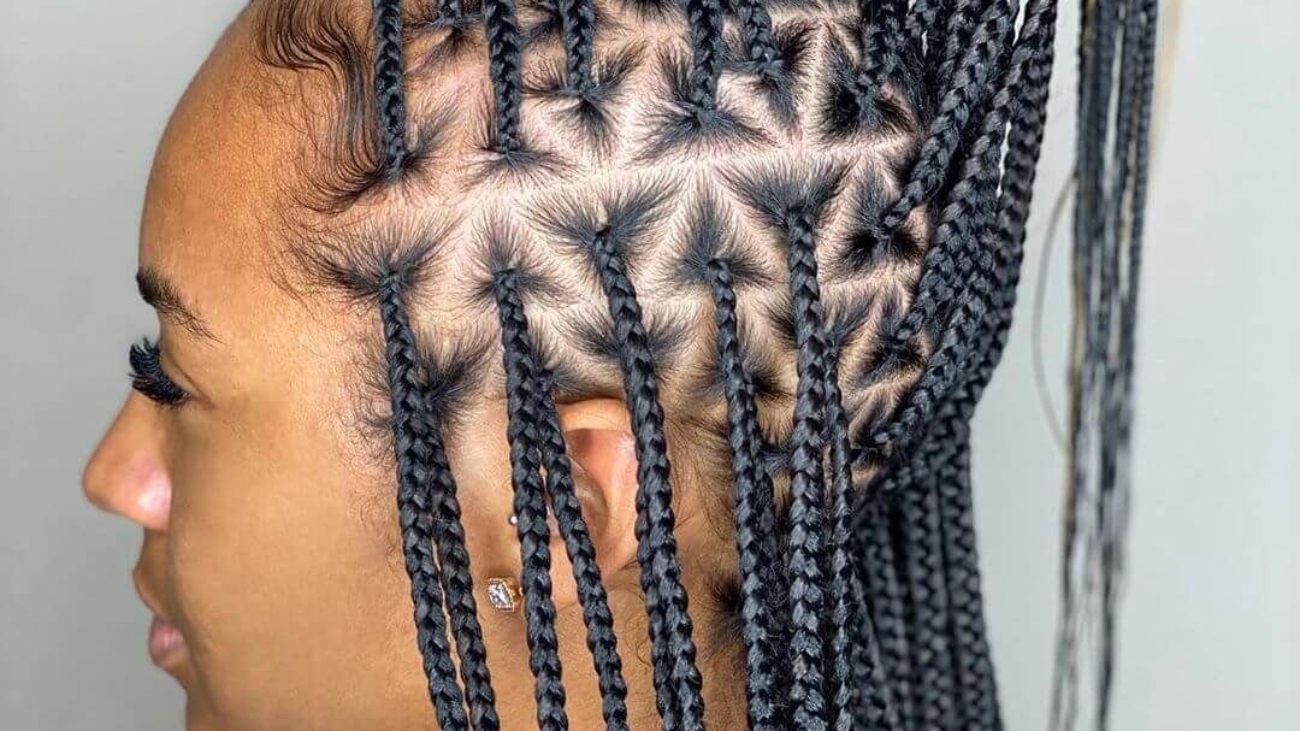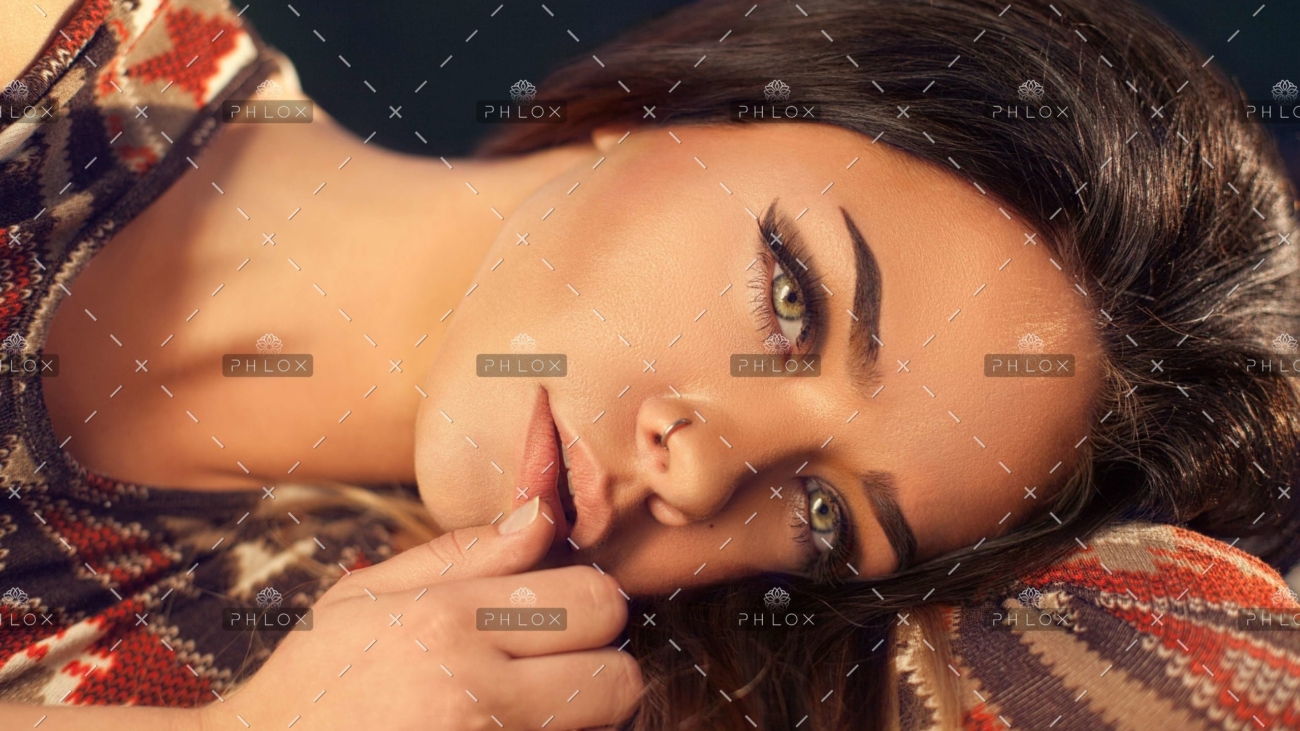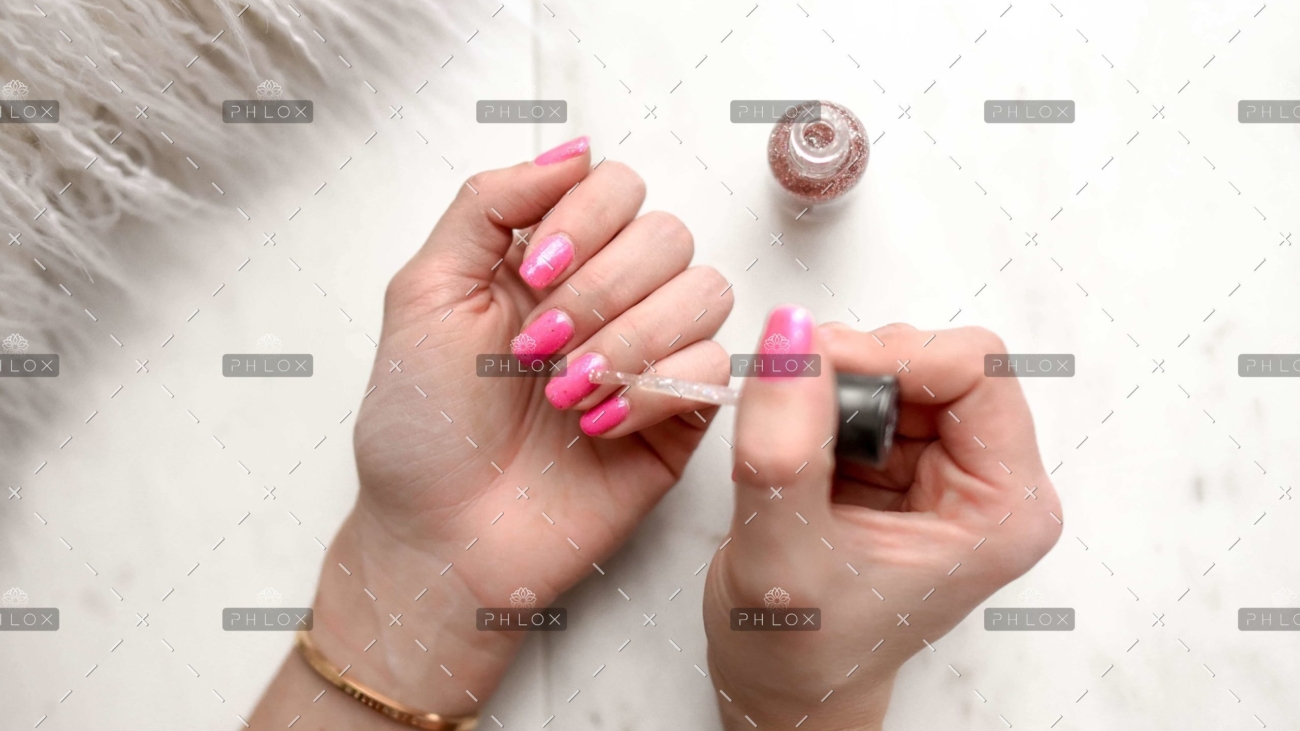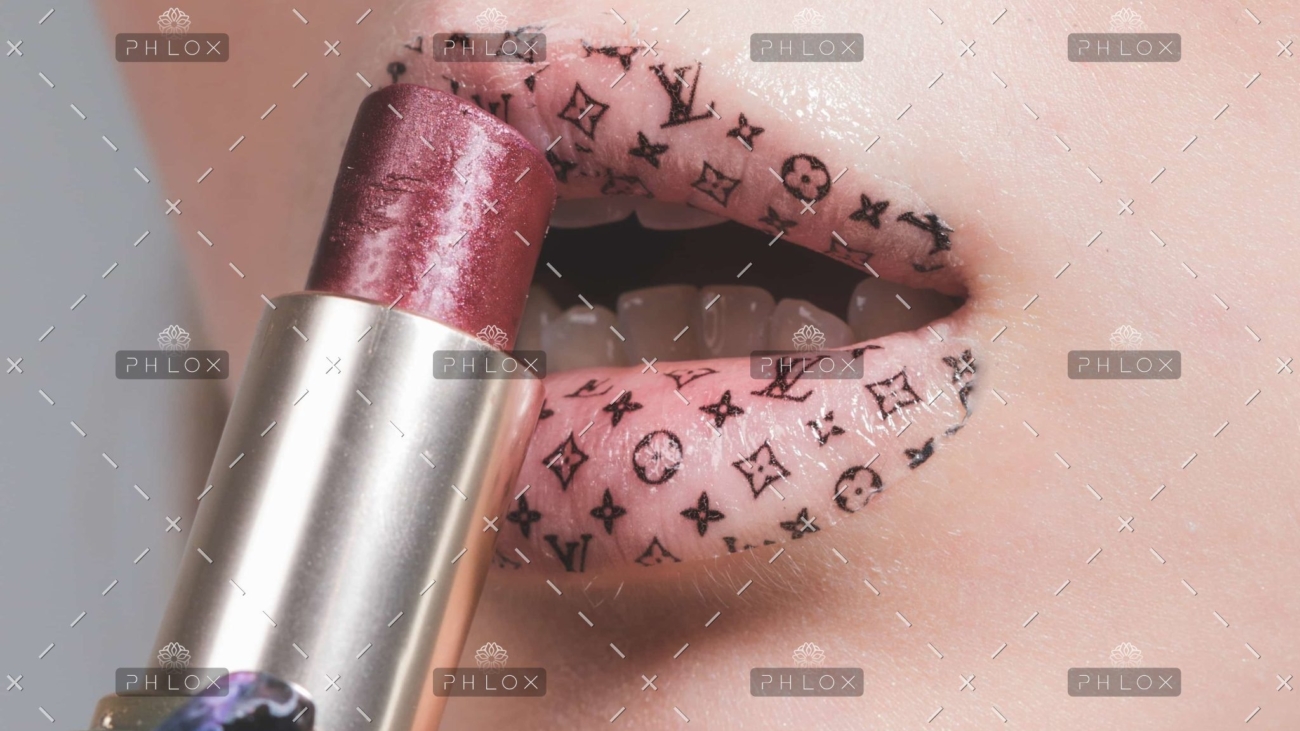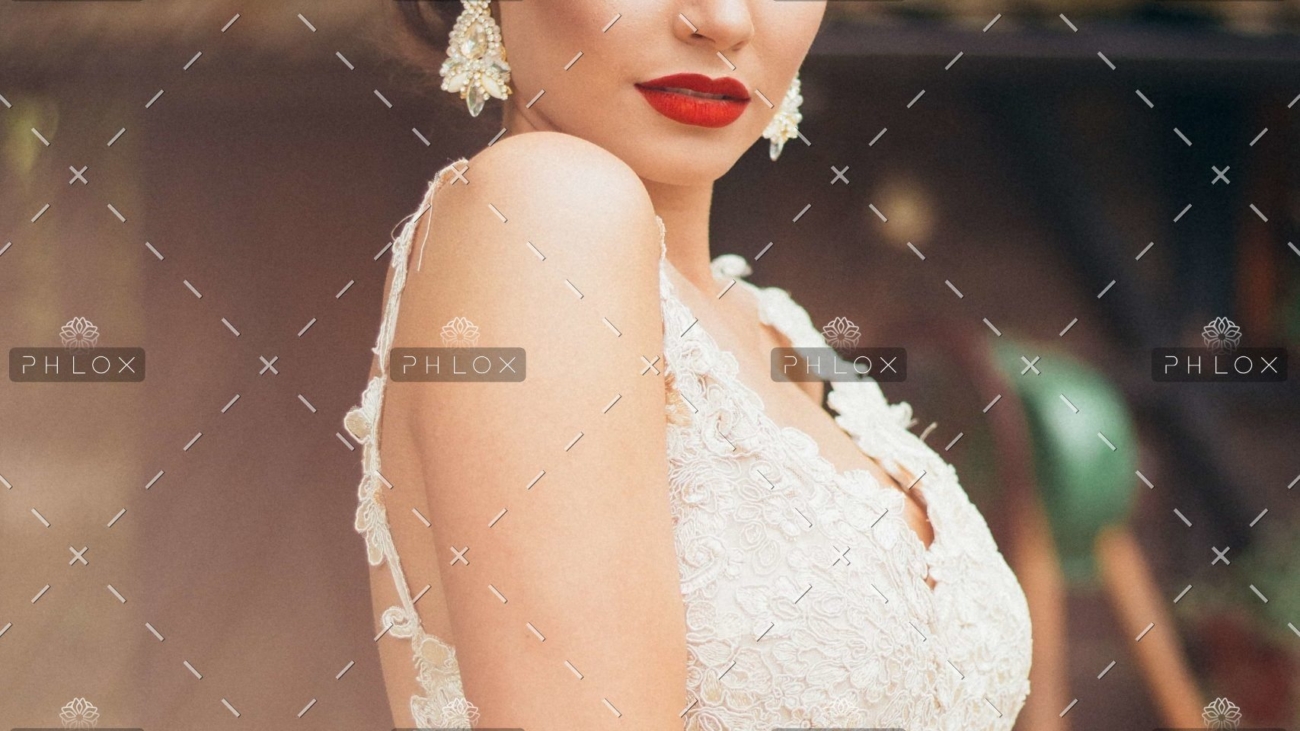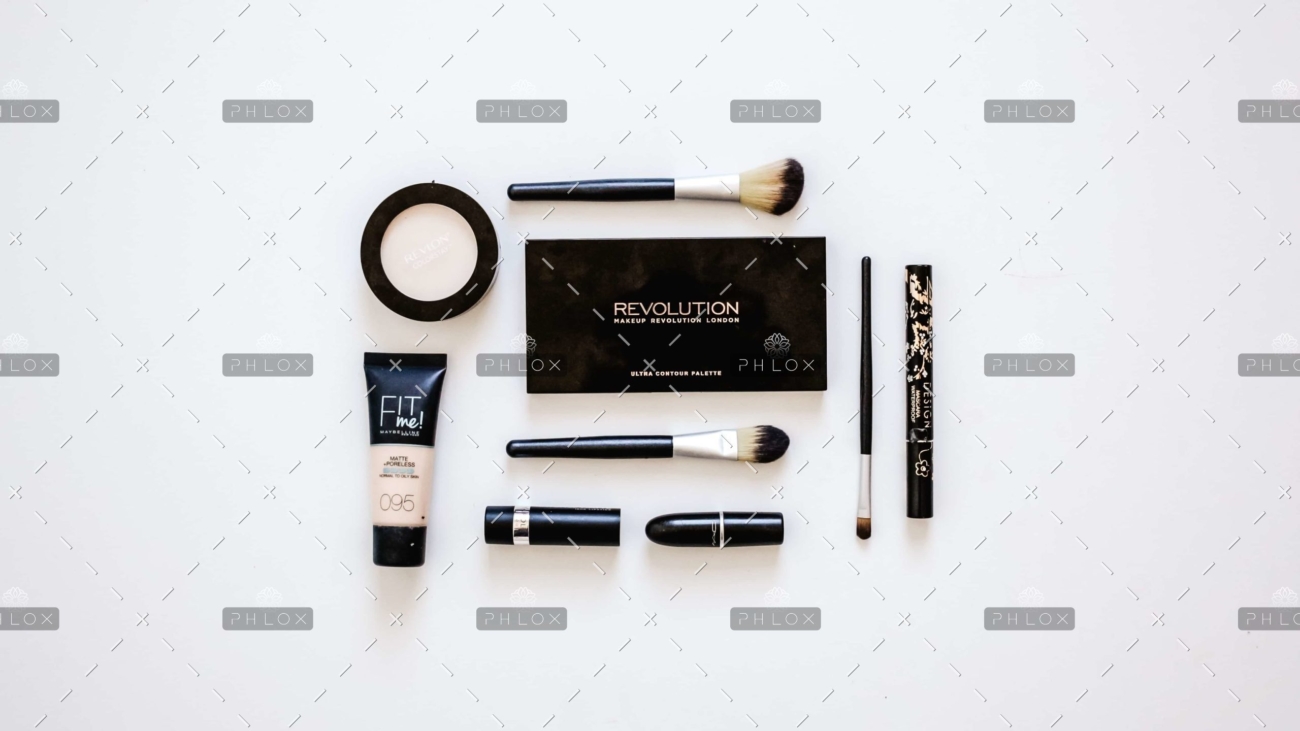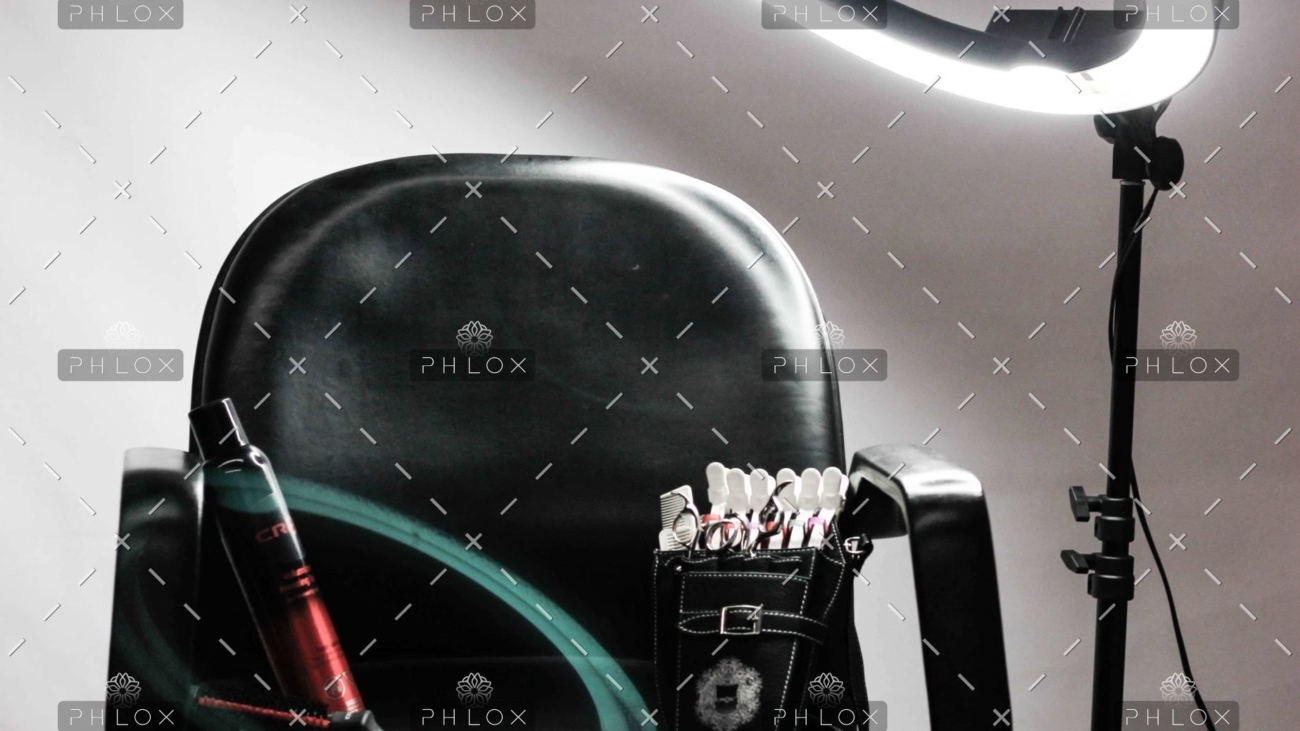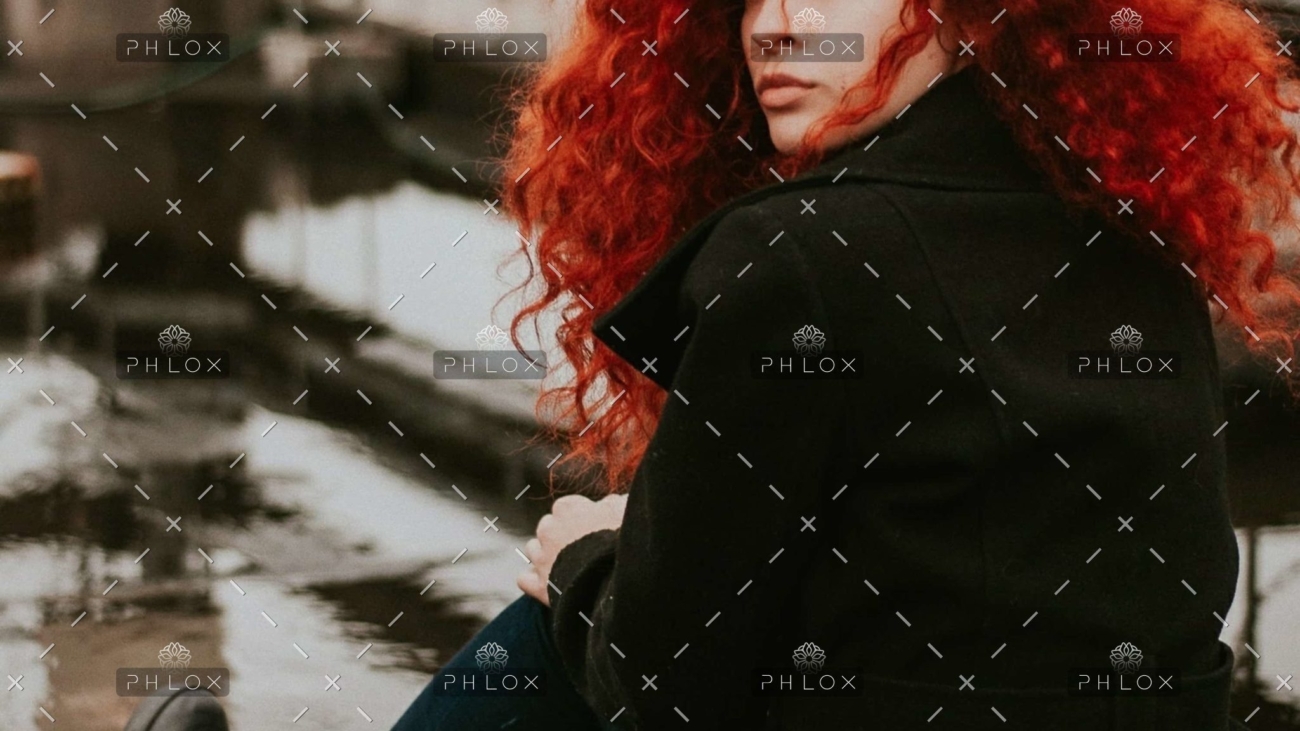All the natural hair girlies know that summer means replacing curl gels and hour-long wash days with an easy breezy protective style. This switch often entails one of the many braid options like knotless, boho, or Fulani, but can also include variations of twists and locs. Transitioning to these styles once temperatures begin to rise means less time spent crafting your perfect curls or coils and more time spent outside hanging with friends and actually enjoying the warm weather. They are also great for vacation because you can wake up, take off your bonnet or scarf, and go about your day without touching a single hair product. However one of the main caveats of going this route is that with extra braiding hair on your head, you might sweat more and they can feel heavy on your neck. Plus, you may want to swim in your fresh look, except that’s often considered a taboo practice motivated by fear of ruining it. So, how can you preserve your protective style while still being able to partake in all the fun summer activities?
Two-Strand Twists Should Be Your Next Protective Style
For members of the natural hair community, summer is often all about protective styles. When it’s hot and sticky outside, this method of wearing your hair offers a low-maintenance look that makes for easy styling and gives your curls a break from any manipulation. They’re perfect for a vacation or if you just need a rest from doing your hair every week. Variations of braids or locs are often popular options, but if you want to switch it up and try something a little bit different there are so many two-strand twist styles perfect for summer.
To get the look, it’s exactly how it sounds. After applying product and sectioning off your hair, you twist two pieces till you reach the end. This will get more complicated once you get into different styles, but the beauty is in their versatility. If you prefer a look without extra braiding hair, try twisting your natural hair into your chosen size of two-strand twists, whether that’s jumbo or mini. Then, finish off by dressing it up however you’d like. For those who want something more elaborate, add some braiding hair and go for passion twists that give a bohemian vibe or have fun with color by mixing and matching shades of brown or blonde. The choices are endless.
Mini Triangle Braids
Mini braids may take a long time to install, but with triangle parts, the payoff is worth wait. Small but precise angled sections give the knotless style a fresh update that’s unique and cool.
Waxing And Other Forms Of Hair Removal
Waxing is the process of hair removal from the root by using a covering of a sticky substance, such as wax, to adhere to body hair, and then removing this covering and pulling out the hair from the follicle. New hair will not grow back in the previously waxed area for four to six weeks, although some people will start to see regrowth in only a week due to some of their hair being on a different human hair growth cycle. Almost any area of the body can be waxed, including eyebrows, face, pubic hair (called bikini waxing), legs, arms, back, abdomen, knuckles, and feet. There are many types of waxing suitable for removing unwanted hair.
Strip waxing (soft wax) is accomplished by spreading a wax thinly over the skin. A cloth or paper strip is applied and pressed firmly, adhering the strip to the wax and the wax to the skin. The strip is then quickly ripped against the direction of hair growth, as parallel as possible to the skin to avoid trauma to the skin. This removes the wax along with the hair. There are different forms of strip waxing or soft waxing: heated, cold or pre-made strips. Unlike cold waxing, heated wax is spread easily over the skin. Cold waxing is thicker, which makes it more difficult to spread smoothly over the skin. Pre-made strips come with the wax on them, and they come in different sizes for different area uses.
Stripless wax (as opposed to strip wax), also referred to as hard wax,is applied somewhat thickly and with no cloth or paper strips. The wax then hardens when it cools, thus allowing the easy removal by a therapist without the aid of cloths or strips. This waxing method is very beneficial to people who have sensitive skin. Stripless wax does not adhere to the skin as much as strip wax does, thus making it a good option for sensitive skin as finer hairs are more easily removed because the hard wax encapsulates the hair as it hardens. The stripless waxing method can also be less painful.
Nail Treatments
You can end up with damaged nails for a variety of reasons. Nail-biting or peeling off gels (something you should never do) or using acrylics can lead to damaged nails. Pregnancy and ageing also affect their condition, sometimes making them uneven or more brittle.GHI tip: Keep hydrated by drinking enough water and applying hand cream. Try to avoid excessive washing of the hands as this can dry out the nails and cuticles, and it can cause splitting.
With nail strengtheners, the name is self-explanatory. Look for a product which aims to target weak nails and make them stronger. A good strengthener is full of nourishing and strengthening ingredients to help brittle and damaged nails.Ingredients vary from product to product. Nail strengtheners typically include at least one of ethyl acetate, butyl acetate, nitrocellulose, and tosylamide formaldehyde resin. These ingredients work to reinforce the nail.
Some ingredients such as formaldehyde and phthalates have a bad rep. But they’ve been thoroughly assessed and are safe to use at the levels allowed by law. Each cosmetic product sold in the UK needs to adhere to the strict EU cosmetics regulation. If you’re still worried and want to avoid these ingredients, there are plenty of other options. In our guide, we’ve highlighted which products are phthalate-free, toluene-free and formaldehyde-free.You apply a nail strengthener regularly, like a nail varnish or a cuticle oil (depending on the type), and over time they nurse your damaged digits back to health. Check the brand’s instructions for more details of how to use your chosen miracle maker. A nail strengthener can also act as a basecoat to help extend the life of your manicure, which is a bonus.
We recruited a panel of over 300 women to brush and polish their way through 14 brands of nail strengthener to find out which is the best. They assessed the applicator, drying time, and how quickly they saw improvements in their nail strength.While our testers tried out the nail strengtheners, we put the claims to the test in our beauty lab. Using a NailStressStrain Meter (a nail measurement device), we looked at improvements in nail strength and thickness over four weeks.
Special Face Makeup
Prime your face. Before you add any makeup you need to prime your face. The purpose of a face primer is to enhance the appearance of makeup and increase the longevity.You can apply the primer with your fingers, covering your whole face with a small amount. The primer will also help your makeup up stay on all day. If you are going to sweat, run, or do anything that will cause your makeup to wear off or smear, primer is a necessity for you.
There are several types of foundation[4], but they are generally applied the same way. Liquid, cream, and powder foundations all act to create a more even complexion, working to create an even base for your other makeup. Use a foundation brush or damp beauty sponge to apply foundation to your face, blending into your neck and earlobes if necessary. Keep in mind that your foundation should be the same color as your natural skin tone, not much darker or lighter. It helps to match your foundation to your chest and neck so your face isn’t a different color than the rest of your body. You never want a harsh line from your jawline to your neck. This is very unnatural and gives a harsh and unblended finish, which is not what you want. Choosing a color that matches your skin always helps.
- You can use a concealer brush to add a little extra foundation to cover up stubborn blemishes.
- Liquid foundation can be applied with your fingertips, although this is more likely to introduce bacteria to your skin and cause future breakouts.
The purpose of concealer is to even out uneven skin tone as a result of blemishes or dark under-eye circles. You can also use a concealer in a shade slightly lighter in your skin tone to brighten dark areas or high points of your face. Use a concealer brush or your (clean) fingertips to blend concealer on your undereye area in an upside-down triangle shape, down the bridge of your nose, chin, the center of the forehead, and above the upper lip. You can use a shade matching your skin tone to cover any red areas or over any acne or dark spots. Blend the edges of your concealer so it seamlessly blends into your foundation.
Complementary Care Such As Aromatherapy
What is aromatherapy?
Aromatherapy is the use of essential oils from plants to improve the mind, body, and spirit. It is used by patients with cancer to improve quality of life and reduce stress, anxiety, pain, nausea, and vomiting caused by cancer and its treatment. Aromatherapy may be used with other complementary treatments like massage therapy and acupuncture, as well as with standard medical treatments, for symptom management.Essential oils are the fragrant (aromatic) part found in many plants, often under the surface of leaves, bark, or peel. The fragrance is released if the plant is crushed or a special steam process is used.
There are many essential oils used in aromatherapy, including those from Roman chamomile, geranium, lavender, tea tree, lemon, ginger, cedarwood, and bergamot. Each plant’s essential oil has a different chemical make-up that affects how it smells, how it is absorbed, and how it affects the body.Essential oils are very concentrated. For example, it takes about 220 pounds of lavender flowers to make about 1 pound of essential oil. The aroma of essential oils fades away quickly when left open to air.
How is aromatherapy given or taken?
- Indirect inhalation: The patient breathes in an essential oil by using a room diffuser, which spreads the essential oil through the air, or by placing drops on a tissue or piece of cotton nearby.
- Direct inhalation: The patient breathes in an essential oil by using an individual inhaler made by floating essential oil drops on top of hot water.
- Massage: In aromatherapy massage, one or more essential oils is diluted into a carrier oil and massaged into the skin.
Essential oils may also be mixed with bath salts and lotions or applied to bandages.There are some essential oils used to treat specific conditions. However, the types of essential oils used and the ways they are combined vary, depending on the experience and training of the aromatherapist.In laboratory studies, tumor cells are used to test a substance to find out if it is likely to have any anticancer effects. In animal studies, tests are done to see if a drug, procedure, or treatment is safe and effective in animals. Laboratory and animal studies are done before a substance is tested in people.
Facials And Skin Care Treatments
Last year, Americans spent nearly $17 billion on spa services. A lot of that money went toward facials: treatments that claim to remove blemishes, combat wrinkles, moisturize, regenerate, tighten and otherwise beautify the skin so that your face looks fabulous.But is there evidence to support the claims (and costs) of these treatments? Experts say it depends on the type of facial, where you have it performed and the skin benefit you’re hoping to get out of it.
“I was at this beautiful spa in Santa Fe, and the esthetician giving me a facial said the next citrus emollient she was going to apply would help cleanse my liver,” recalls Ushma Neill, editor-at-large of the Journal of Clinical Investigation and vice president of scientific education and training at Memorial Sloan Kettering Cancer Center. “I almost sat up in disbelief.”
That experience, Neill says, prompted her to investigate the existing science on spa facials. She published her findings in a 2012 report. Her conclusion? “I realized just how useless it all was,” she says. “I haven’t had a facial since I wrote that article.”
Neill says she doesn’t dispute claims that facials can temporarily revamp the skin by “moisturizing it to the max” and removing pimples and other blemishes. But when it comes to many of the fancier, pricier services that claim to combat aging or inflammation—everything from ozone and antioxidant treatments to stem-cell extract applications—most of that stuff is “complete malarkey,” she says.
Other experts reiterate that point. “As a dermatologist, I see a lot of patients with misperceptions about different creams and procedures and the whole concept of facials,” says Dr. Joel Cohen, an associate clinical professor of dermatology at the University of Colorado and director of AboutSkin Dermatology and DermSurgery near Denver.Apart from moisturizing the skin, Cohen says most topical creams are unlikely to provide much lasting benefit—especially if applied sporadically and only in a spa setting. And while some chemical peels that use substances like salicylic or glycolic acid can help stimulate skin cell turnover and repair, Cohen says proper daily skin care—regular cleansing and applying moisturizer and sunscreen—are a lot more likely to be helpful.
Hair keratin Treatment
Keratin is a structural protein found in our hair, skin, and nails. It’s also commonly found in styling products to help strengthen hair—but the term keratin treatment is actually a misnomer. “Keratin treatments are a semi-permanent hair straightening treatment that smoothes and adds shine to frizzy hair,” says Fitzsimons. How the treatments work is not through the use of keratin, though.
Eleifend quam adipiscing vitae proin sagittis nisl rhoncus mattis rhoncus. Lectus mauris ultrices eros in cursus turpis massa tincidunt. Nisl pretium fusce id velit ut. Nunc congue nisi vitae suscipit. Libero enim sed faucibus turpis in eu. Tempor id eu nisl nunc mi ipsum. Eget felis eget nunc lobortis. In fermentum et sollicitudin ac orci phasellus. Commodo elit at imperdiet dui. Eget nunc lobortis mattis aliquam faucibus purus. Semper auctor neque vitae tempus quam pellentesque nec nam aliquam. Sapien et ligula ullamcorper malesuada proin. Ac feugiat sed lectus vestibulum mattis. Adipiscing elit duis tristique sollicitudin nibh sit amet commodo nulla. Eget mi proin sed libero enim. Egestas diam in arcu cursus. Congue eu consequat ac felis. Turpis cursus in hac habitasse. Arcu non odio euismod lacinia at. Molestie nunc non blandit massa enim nec dui nunc.
While similar to other hair straightening treatments, keratin treatments are still distinctively different. Japanese hair treatments and traditional relaxers permanently break your hair’s bonds using ammonium thioglycolate and sodium hydroxide—making them far more effective on coily hair and also more damaging. The growing-out phase will also be more intense than with a keratin treatments, since there will be a line of demarkation when your natural texture grows back in.
Part of the concern with keratin treatments revolve around one of the ingredients found in most traditional salon formulas: formaldehyde. The Centers for Disease Control (CDC) defines it as a colorless, strong-smelling gas that is usually used to make building materials, household products like glue and fiberboard, and used as a preservative when dissolved in water. In keratin treatments, it’s responsible for locking the hair into that new straight and smooth position for months. But these treatments don’t actually contain formaldehyde, because, well, it’s a known carcinogen. What they contain instead is ingredients like methylene glycol, formalin, methanal, and methanediol, that release the carcinogenic compound when mixed with water during the treatment. So while the formula might technically be formaldehyde-free, it’s not once mixed with water.
Highlight/Lowlight
Choose hair colors one to two shades darker than natural color for natural results. For more dramatic results, go for shades two to four shades darker. If this is your first time dyeing your hair, you may want to try using temporary or semi-permanent dye rather than permanent dye.
- Temporary dyes tend to wash out after one shampoo.[1]
- Semi-permanent dyes will wash out after 20 to 26 shampoos.
- Permanent dyes may fade, but they usually stay in your hair until it grows out.
Highlights are essentially the opposite of lowlights. Highlight colors should be one to two shades lighter than your natural hair color. For more dramatic results, go for shades three to four shades darker.
- You may need to bleach your hair to highlight it, which is best done in a salon.
Divide your hair into five sections. Make sure your five sections are roughly even. There should be one section on the top of your head. Then, on either side of your head, separate the hair into two sections. When you’re done, you should be left with one section of hair on top and four sections on the sides. Use rubber bands or hair clips to secure your hair.[2]
- In other words, you should have three sections in the front of your head, and two in the back.
Use the slicing method to separate hair for a more dramatic look. Let down one of the sections. Starting at the top of the section, insert the end of your comb through your hair. Only a very thin section of hair should be on top of the end of the comb. Remember that for both highlight and lowlights, you should apply dye to very thin chunks of hair.

